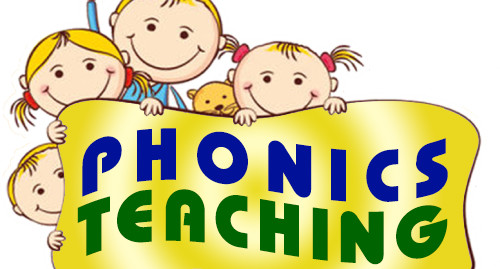Phonics for kids is an essential building block in early childhood education. As young learners begin to explore the world of reading and writing, phonics helps them decode words, understand letter sounds, and develop strong reading fluency. But what exactly is phonics, and how can it benefit your child? Let’s explore how phonics for kids plays a pivotal role in language development and why it’s a fun, engaging way to support their learning journey.
What Is Phonics?
Phonics is the method of teaching children to recognize and connect letters with their corresponding sounds. This approach helps kids understand how words are formed, making it easier to read and spell. By learning phonics, children can break down unfamiliar words into smaller, manageable parts, making reading a less intimidating process.

For example, the letter “c” represents the sound /k/, while the letter “a” often represents the sound /æ/ (as in “cat”). When kids learn these sound-letter associations, they can apply them to new words they encounter, which builds their confidence and reading ability.
Why Is Phonics Important for Kids?
Phonics plays a crucial role in a child’s reading development. Here’s why it’s so important:
- Builds Strong Reading Skills
Phonics provides the foundation for reading by teaching kids how to sound out words. As they grow more familiar with letter sounds and blends, they can quickly decode words, which boosts their reading fluency. This is a key factor in helping children become confident readers. - Improves Spelling
When children understand phonics, they can better spell words based on their sounds. Knowing that “sh” makes a /ʃ/ sound, as in “shoe,” helps kids spell words correctly. Phonics instruction also improves writing skills, as children become more aware of how words are structured. - Enhances Vocabulary
By learning phonics, children can decode new words and expand their vocabulary. As they encounter new words in books, they can use their phonics knowledge to sound them out and understand their meanings. This skill leads to a broader range of words in their everyday language. - Boosts Confidence
Reading can be overwhelming for young learners, especially when they come across unfamiliar words. Phonics allows kids to break down complex words into simpler parts, making reading feel more achievable. This boost in confidence motivates children to read more often and engage with books at an early age. - Supports Long-Term Academic Success
Phonics is not just about learning to read in the early years; it’s about laying a foundation for academic success. Children who develop strong phonics skills tend to perform better in other subjects, as reading comprehension is essential for understanding and learning across all areas of study. How to Teach Phonics to Kids
Teaching phonics can be a fun and interactive experience. Here are some tips for parents and educators looking to introduce phonics to children:

- Start with Letter Sounds
Begin by teaching kids the sounds that letters make. Focus on the most common letter-sound relationships first, such as “a” as in “apple” and “b” as in “ball.” Make the learning process fun by incorporating songs, games, and visual aids. - Introduce Blends and Digraphs
Once children are comfortable with individual letter sounds, introduce them to blends (two or more letters that make a distinct sound together) and digraphs (two letters that form a single sound). For example, “ch” in “chip” and “th” in “thumb.” These concepts help kids tackle more complex words. - Use Rhyming Games
Rhyming games are a great way to engage kids in phonics while helping them recognize similar sounds. Rhyming words, such as “cat” and “hat,” help kids understand how words are built from sounds. You can play rhyming games with everyday objects, toys, or even books. - Read Aloud Together
Reading aloud is an excellent way to reinforce phonics skills. Choose books with simple, phonetic words and read together, pointing to each word as you go. Encourage your child to sound out words as you read, and praise them for their efforts. - Incorporate Technology
There are many apps, websites, and interactive games that can reinforce phonics skills. Digital tools can make learning phonics more exciting, offering activities like phonics puzzles, sound-matching games, and interactive storybooks. Fun Phonics Activities for Kids
To make phonics even more enjoyable, here are a few fun activities that can be incorporated into your child’s learning routine:
- Phonics Puzzles: Create simple puzzles that focus on matching letters with their sounds. For example, use pictures of animals, objects, or actions that start with specific letters. Children can match the letter to the picture to reinforce their phonics knowledge.
- Sound Scavenger Hunt: Go on a scavenger hunt around the house or yard. Ask your child to find objects that begin with a particular sound. For example, find a “b” sound object, such as a ball or book. This helps children associate sounds with real-world objects.
- Phonics Songs: Use catchy songs and rhymes to reinforce phonics rules. Singing can make learning feel less like work and more like play. You can even create your own phonics songs using familiar tunes!
- Phonics Flashcards: Create flashcards with letters and pictures. Test your child’s knowledge by showing them the card and asking what sound the letter makes. As they become more confident, you can also add more complex cards with blends and digraphs. Conclusion
Phonics for kids is an invaluable tool in helping children develop strong reading, writing, and spelling skills. By teaching kids letter sounds, blends, and digraphs, phonics empowers them to decode words, understand new vocabulary, and grow into confident readers. Whether you’re using games, songs, or books, there are plenty of fun ways to make phonics an engaging part of your child’s learning journey.
If you’re looking to boost your child’s reading skills, start with phonics and watch them build a solid foundation for a lifetime of learning!


